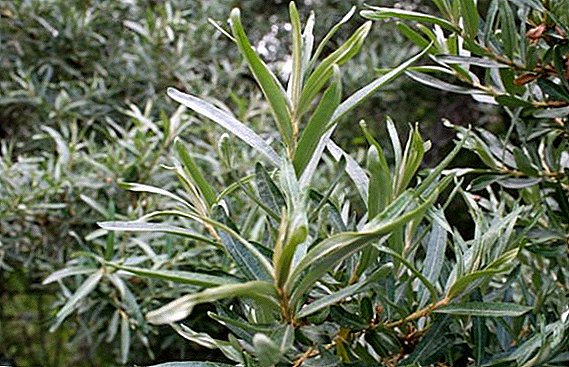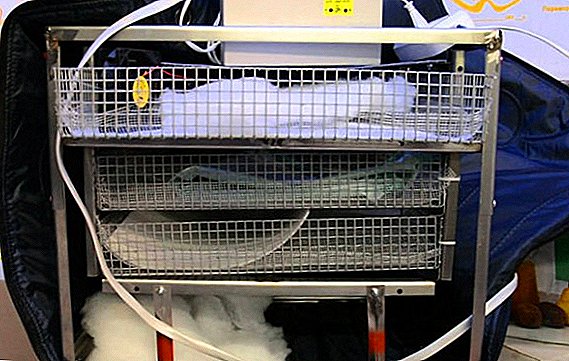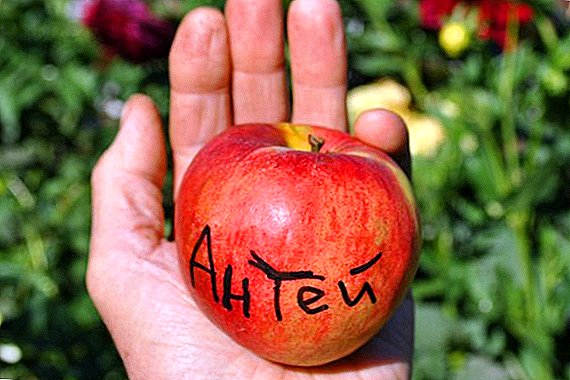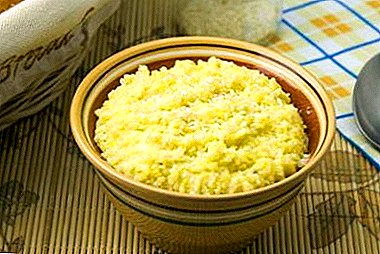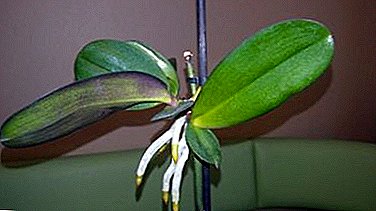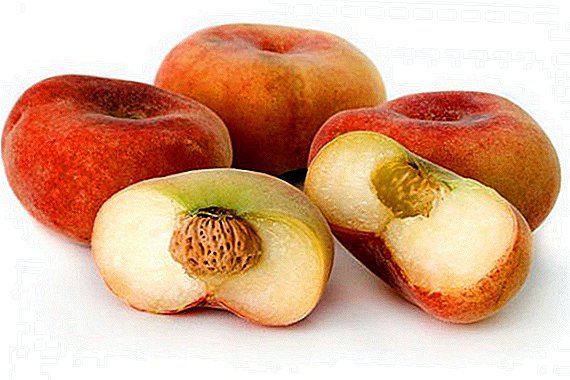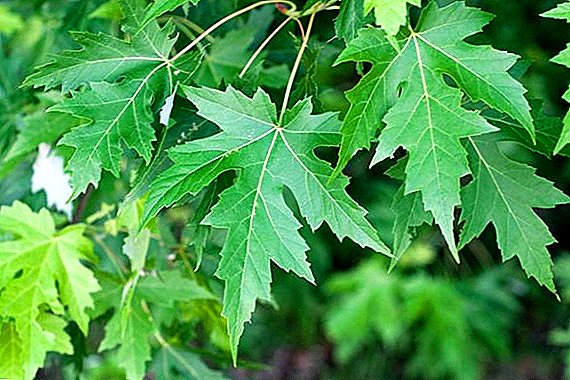 This article focuses on the plant, which is not only a refuge and food supply for many animals, but also an excellent option for gardening gardens or alleys. You will learn what a silver maple is, what are its requirements for growing conditions. Read below for fit and care.
This article focuses on the plant, which is not only a refuge and food supply for many animals, but also an excellent option for gardening gardens or alleys. You will learn what a silver maple is, what are its requirements for growing conditions. Read below for fit and care.
Appearance and botanical description
Silver maple - deciduous tree, which belongs to the same-named family. It should be noted that according to another classification, silver maple belongs to the Sapindov family.
The height of the tree is 27-36 m, depending on the climate and soil fertility. The tree trunk is short, and quite often additional branches are formed at its base. This suggests that the crown is formed almost the entire height of the tree, because of which it is impossible to achieve the absence of shoots on the lower part of the trunk.
Crown does not differ in density, has a rounded shape, because of what from a distance it looks like a cap. Shoots are arcuate. At first they are tilted down, but their tips rush up. The shape of the branches in a bend resembles spruce shoots. Bark in young trees it is painted in a light gray color, but in older and older trees it is dark, has weakly visible narrow cracks, and is also covered with small scales.
Bark in young trees it is painted in a light gray color, but in older and older trees it is dark, has weakly visible narrow cracks, and is also covered with small scales.
Rhizome not very long. The root system is represented by fibrous roots. This means that the main massive root is absent, so the system is formed by a large number of accessory roots.
Kidney painted in dark red color that borders on brown. Large scales are well visible on the kidneys. Flower buds are distinguished by the fact that they are always gathered in clusters.
Familiarize yourself with the nuances of growing Ginnal maple, Flamingo, and Norway, Red, Tatar, Japanese, Alpine, and Manchurian maples.
Leaves painted on the outside in green or light green matte color. On the back of the sheet plate has a white color with a shade of silver. The leaves on the shoot are formed opposite each other (opposite), the plates are divided into five blades, between which there are deep grooves. The length is from 8 to 16 cm, and the width is from 6 to 12 cm. Flowers both males and females are formed on one plant, so the maple can self-pollinate without the presence of other plants belonging to this genus. Buds are collected in small panicles. The petals are painted in different shades of green and red. Flowering occurs very early, always before the appearance of the leaves.
Flowers both males and females are formed on one plant, so the maple can self-pollinate without the presence of other plants belonging to this genus. Buds are collected in small panicles. The petals are painted in different shades of green and red. Flowering occurs very early, always before the appearance of the leaves.
Fetus is standard for this genus and is a regular lionfish. Each wing has a length of about 4 cm and a width of up to 1 cm. Full ripening of the fruits occurs already at the end of spring, after which the cages are massively distributed over the adjacent territory. It is worth noting that after entering the soil, the seeds immediately begin to germinate.
Growth rate quite high. In the first 10–20 years, we can expect an annual increase in the region of 0.8–1 m. After 20 years, the rate slows down and is 20–40 cm. The increase is 35 cm in width.
Lifespan is about 130-150 years old.
Important! Silver maple is similar to maple red, so when they are planted in one area and further pollinated, they will give hybrid plants.

Where grows
This type of maple is common in North America. It grows in the northern states of the United States, as well as in Canada. In the wild, the tree can be found in the wet lowlands, near rivers and lakes. Culture likes high humidity, so it is not screened out on dry elevations.
We advise you to read about the beneficial properties and the use of maple and maple sap.
In nature, silver maple prefers open areas, especially if the nutritional properties of the soil leave much to be desired. In the penumbra can grow well only if the substrate is very nutritious.
Natural meaning
Maple trees are a real salvation for many species of birds, as it gives them nutritious seeds at a time of the year when flowers only form on other trees. Shoots, seeds and buds act as food for squirrels and chipmunks, which in early spring suffer from food shortages.  Not averse to eat sweetish shoots and deer, hares, and beavers. The tree is not only the root base, but also a refuge for animals and birds. Birds build their nests on a silver maple, and squirrels, raccoons, owls and woodpeckers are located in hollows.
Not averse to eat sweetish shoots and deer, hares, and beavers. The tree is not only the root base, but also a refuge for animals and birds. Birds build their nests on a silver maple, and squirrels, raccoons, owls and woodpeckers are located in hollows.
Application in landscape design
This is an unpretentious fast-growing tree, which at the age of 20 has a height of about 15 m. Given these features, maple is used for landscaping streets. It is also planted on dividing lanes near the road, since the growth of the tree is not affected by harmful emissions of transport.
As for landscape design, the silver variation is the best choice for quickly creating a garden from scratch. Planted trees in arrays near water bodies, as they not only look great in such a place, but also withstand high soil moisture, which cannot be said of many other cultures.
Best of all with the help of silver maple to create a maple alley. Also a good option is a solitaire (a design technique used in creating landscapes of parks) based on maple, but in this case the garden should have a large area. 
Growing conditions
Next, read about the growing conditions, which will depend not only on the possibility of planting a tree in your climatic conditions, but also on the appearance and growth rate.
We recommend to read about how to grow a home maple (abutilon).
Lighting. In nature, maple prefers open, well-lit spaces, but can grow in partial shade. In the conditions of the garden, partial shade is not an acceptable solution, since it will negatively affect the growth rate, with the result that you will have to either wait longer or spend money to improve the nutritional value of the soil.
For this reason, it is better to allocate more space to a fast-growing tree to see a beautiful tall tree, and not a dwarf wilted plant with a lot of diseases.
Substrate. As for the soil, then you should pay attention to the structure and properties of moisture retention. Heavy clay soils should be immediately eliminated, as well as sandstones.  On clay soil, maple will be very difficult to form the root system, and on sandy soil - the tree will remain without the necessary moisture, and the nutritional value of sandstones is extremely low.
On clay soil, maple will be very difficult to form the root system, and on sandy soil - the tree will remain without the necessary moisture, and the nutritional value of sandstones is extremely low.
Windiness Planting a tree in a draft or large open spaces is a very bad idea, since you will have to prune broken shoots several times a year. And if an adult tree normally reacts to the breakage of a couple of shoots, then a young tree may die or stop growing if an already small crown decreases due to gusts of wind.
Groundwater. The minimum level is 2 m, which will be quite enough so that the maple will not get to them throughout their life. Since the rhizome is fibrous and diverges to the sides, it is better to take care of the distance to nearby water bodies, rather than groundwater.
Important! Remember that the clay layer will not allow the roots to form normally, so choose a site where the clay level lies at a depth of two meters.

Frost resistance Silver maple belongs to climate zone 4. This means that the maximum reduction in temperature that a tree can withstand is -34 С. In this case, you should worry about the condition of the tree when the temperature drops to -29 ˚С, if there is not enough snow. Freezers often appear on trees after winter.
Landing rules
Learn the basics of tree care to help avoid mistakes. How to form a cascade of several plants?
Timing. Planting can be carried out both in early spring and early autumn. In regions with a cold climate, it is better to plant the spring in order for the tree to acclimatize and get the necessary nutrients from the soil before winter.
Soil mix. The following mixture is used (in a ratio of 2: 2: 1): leaf earth, peat, sand. It is better to take large river sand to improve drainage properties.  We should also mention the acidity of the soil and the initial application of mineral fertilizers. Maple loves a neutral or slightly acidic soil, so if you have an alkaline substrate in your area, it is good to oxidize it. In the prepared soil mixture contribute up to 150 g of nitroammofoski. Other mineral fertilizers are not required at the initial stage.
We should also mention the acidity of the soil and the initial application of mineral fertilizers. Maple loves a neutral or slightly acidic soil, so if you have an alkaline substrate in your area, it is good to oxidize it. In the prepared soil mixture contribute up to 150 g of nitroammofoski. Other mineral fertilizers are not required at the initial stage.
You will probably be interested to read about how to independently determine the acidity of the soil, as well as how to deoxidize the soil on the site.
Preparation of the hole. In the area where you are going to plant a tree, you need to remove weeds and various debris, then immediately check the pH using tests. Next, dig a hole.
As is the case with the planting of most trees, we lay off the upper fertile layer separately, and remove the lower one. In the future, mix the top layer of soil with the soil mixture described above to get the best option.
The depth and diameter of the pit should correspond to the root system. In any case, the diameter of the hole must be larger than the size of the roots, otherwise you will damage them during planting.  1.3 - vegetable land; 2 - root neck of the trunk Separately, it should be said about groundwater. If you do not know exactly at what depth they lie, then deepen the hole by an extra 20 cm, and then lay the drainage (expanded clay, small pebbles, small crushed stone). This is additional insurance that will help you out if the groundwater level is above 2 meters.
1.3 - vegetable land; 2 - root neck of the trunk Separately, it should be said about groundwater. If you do not know exactly at what depth they lie, then deepen the hole by an extra 20 cm, and then lay the drainage (expanded clay, small pebbles, small crushed stone). This is additional insurance that will help you out if the groundwater level is above 2 meters.
Did you know? Not only maple syrup, which is produced on the basis of plant sap, is eaten. The Japanese began to use the leaves of the tree as a snack. After collecting the raw materials, the green leaves are kept in barrels of salt for about 6 months, then coated with sweet dough and fried in oil.
Landing. After the formation of the hole, make a small mound in its center, the height of which should not exceed 20 cm. We do this in order to better position the rhizome. Next, immerse the tree in the hole and straighten the roots.
It is important to immediately check whether the root neck is parallel to the substrate or is below the required level. This is very important, because if you bury the root neck, the tree will die.
Video: maple planting
If everything is in order, then slowly fill the pit, getting rid of air chambers that prevent the roots from contacting the soil, due to which the development process slows down. After the final filling of the pit, the tree should be watered abundantly. Bring at least 20 liters of water, which has an acceptable temperature. This means that pouring ice water or very hot is not worth it.
Do not forget about the mulching wheel circle. Immediately after planting, they spread about 3-5 cm of peat in order not only to protect the soil from the temperature drop, but also to improve its nutritional properties. Mulching also helps to avoid the appearance of weeds.
Planting several plants. When planting several maple trees, you need to maintain the necessary distance, otherwise the trees will shade each other, which will negatively affect their growth.
As well as maple, popular ornamental trees also include: thuja Smaragd, juniper, chestnut, Glauka spruce, weeping willow, oak, magnolia, sakura, acacia, willow.In the formation of a hedge, where the density of trees is high, neighboring specimens are planted at a distance of 2 meters. In any other case, the minimum distance between maples should be 3 meters.

Care Tips
Irrigation. Maple needs a certain amount of moisture. A tree can survive short-term droughts, but only if the plant is in good condition, it does not get sick and is not affected by pests. It is also worth remembering that a tree can also endure drought, but at that time there should not be hot weather, otherwise the evaporation of moisture through the leaves will be extremely high.
There is a certain rate of irrigation, according to which 10 to 20 liters of water should be brought under each tree once a month if the weather is humid or the same volume, but once a week if the air temperature is very high.
Fertilization. If you didn’t add mineral water when planting, then next year you should feed the tree with potassium, phosphorus and nitrogen, adding the following fertilizers:
- 40 g of urea;
- 20 g of potassium salt;
- 40 g of superphosphate.

The specified amount of fertilizer applied to 1 square meter. Also, it will be useful to add 100 g of Kemira to 1 square in the summer during weeding or loosening of the trunk circle. The composition of this feeding includes many essential trace elements that are also needed by the plant, as well as macronutrients, but in smaller quantities.
Mulching. During planting, the mulch is put in, which eventually decays, so it is recommended to update it annually - to lay out a new layer of peat of constant thickness. Also, as the mulch fit pine branches, if you are afraid of the invasion of pests. Many insects do not like the smell of eating, so they will not come close to the maple.
Crop. In the first two years of life, pruning is not necessary, otherwise you will slow down the growth, and also cause the deterioration of the protective properties of the young plant. In extreme cases, only diseased or dry shoots are removed so that pests do not settle on them.
Beginning at the age of 3 years, maple should be pruned annually at the end of winter, removing diseased, dry and broken shoots. It is possible to carry out formative pruning, but this is not a mandatory step. The main thing - to save the plant from the "dead weight", which affects the appearance, and also attracts pests and diseases. 
Did you know? On the basis of American maple, a special coal is made, through which Jack Daniel's famous drink is filtered.
Now you know what a silver maple is, where it grows, and whether it is difficult to grow it. Remember that the plant can start side shoots, which will cause thickening of the plantings.
Do not forget about the seeds, which when released into the fertile soil immediately germinate. Such seedlings are best removed, because after a year they will have a height of about one meter.




